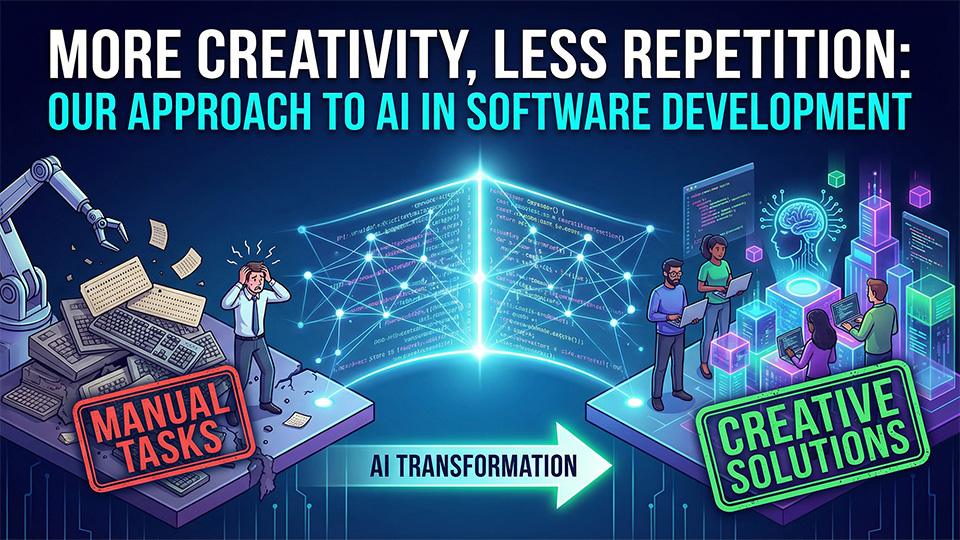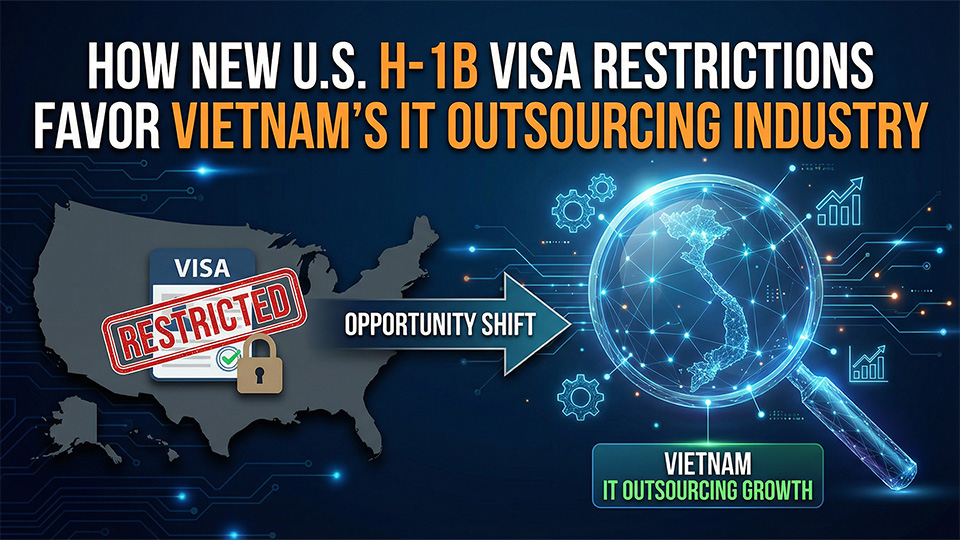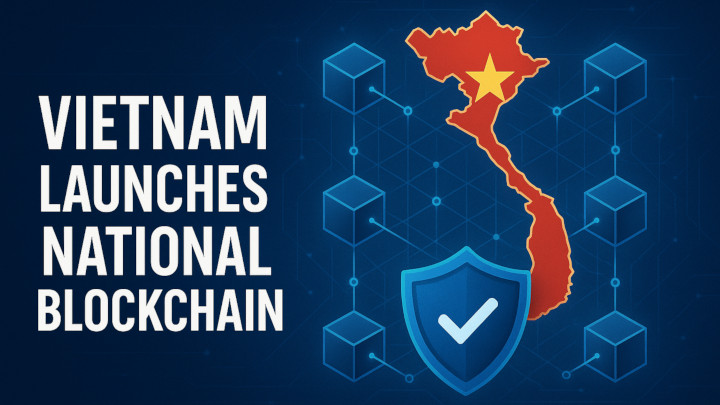February 24, 2025
Top 15 FinTech Trends 2025: Insights & Analysis
Are you prepared to navigate the future of finance? The fintech sector is expected to have a significant impact on businesses and consumers, with substantial growth projected to reach $460 billion by 2025.
Businesses need to strategically embrace technology innovations to gain a competitive edge, enhance operational efficiency, and meet evolving customer expectations.
Intrigued by the potential of fintech innovation? In this article, Dirox will introduce 15 Fintech trends that are expected to dominate the market in 2025.
Top 15 Fintech Trends in 2025
1. Embedded Finance Becomes the Norm
Financial services are no longer confined to banks and fintech firms—embedded finance is seamlessly integrating into everyday experiences. From payments and lending to insurance and investments, financial services are becoming a natural part of digital ecosystems rather than standalone offerings.
The embedded finance market is set to grow to $138 billion by 2026 from just $43 billion in 2021, reflecting the increasing demand for frictionless financial transactions.
Companies across industries are leveraging this trend to enhance customer experience, create new revenue streams, and improve operational efficiency.
For example, Shopify has successfully integrated financial services into its platform with Shopify Capital, offering small businesses access to loans without the need for a traditional bank.
Similarly, Apple has extended its reach beyond hardware and software with Apple Pay, Apple Card, and Apple Savings, embedding financial tools directly into the consumer experience.

Beyond retail and e-commerce, embedded finance is reshaping sectors like healthcare, education, and real estate.
As consumers continue to seek seamless, digital-first financial experiences, embedded finance is no longer a competitive advantage—it’s a necessity. Businesses that fail to integrate financial services risk losing customers to those that offer a more streamlined, value-added experience.
The future of finance is embedded, and now is the time to embrace it!
2. AI-Driven Hyper-Personalization
AI is revolutionizing FinTech by enabling hyper-personalization, allowing financial services to proactively tailor offerings to individual users. This shift is not just a trend—it’s an industry-wide transformation driven by data, machine learning, and deep learning models.
As fintech firms compete for customer engagement, financial institutions that invest in such capabilities can offer highly relevant services, increasing customer satisfaction, retention, and revenue.
For instance, banks using Personetics' AI technology can notify customers about overspending on dining out and suggest ways to save. Meanwhile, American Express exemplifies this approach by using AI to provide tailored recommendations to cardholders based on their spending patterns.
Beyond spending habits, AI is also reshaping wealth management.
Robo-advisors like Wealthfront use machine learning to suggest personalized investment strategies, adjusting portfolios in response to market trends and individual risk profiles.

These platforms democratize wealth management by offering tailored financial advice without the need for human advisors.
3. Biometric Authentication for Everyday Transactions
The widespread adoption of biometric authentication including facial recognition, voice commands, and behavioral biometrics is reshaping how users interact with banking systems, offering enhanced security and seamless experiences.
Since Apple Pay’s launch in 2014, biometric authentication has increasingly replaced PIN codes, with 82% of global consumers now willing to use fingerprints for card payment authentication. An analysis by Goode Intelligence predicts that over 3.5 billion people worldwide will use biometric technology to secure payments by 2030.
This rapid adoption is driven by many advantages like convenience, security and time saving.

Beyond convenience, biometric authentication is driving financial inclusion, particularly in regions like India.
The Indian government has implemented a national digital identity system incorporating fingerprint, iris, and facial biometrics for over 1.3 billion citizens. This system enables innovative services, such as mobile ATMs in rural areas, verifying identities via biometric scanners and facilitating cash withdrawals.
With growing consumer acceptance and technological advancements, it’s likely that traditional PIN-based authentication will soon feel as outdated as manually unlocking a smartphone does today.
4. Cross-Border Payments with Zero Friction
The volume of cross-border payments is surging, projected to exceed $250 trillion by 2027—up from $150 trillion in 2017. With 50% of online purchases made via digital wallets, demand for seamless international transactions will only accelerate.
This explosive growth is fueled by emerging markets, expanding global trade, and the shift to digital-first financial systems.
However, traditional payment infrastructures remain slow, costly, and fragmented, prompting a shift toward blockchain-backed solutions that offer speed, transparency, and lower fees.
Companies like Ripple are leading this transformation with its blockchain-based system enabling real-time, low-cost settlements across borders.
Recognizing the need for improvement, the G20 has prioritized enhancing cross-border payments, aiming to reduce processing delays and costs. The shift toward frictionless payments ensures businesses and consumers can transact internationally with the same ease as local transactions—reshaping the future of global finance.
5. Alternative Credit Scoring Systems
Traditional credit scoring methods leave millions without access to essential financial services.
In the U.S. alone, 26 million people are considered "credit invisible," which means they have no credit history. Meanwhile, another 19 million have insufficient credit history to generate a score.
Globally, 1.4 billion adults remain unbanked, making it difficult to secure loans or credit lines.
Alternative credit scoring systems are addressing this gap by incorporating non-traditional data sources like rent and utility payments, employment history, and digital transaction records.

Experian Boost, for example, allows consumers to improve their credit scores by adding utility and telecom payments to their credit history, helping them qualify for better financial products.
These innovative models not only promote financial inclusion but also improve risk assessment accuracy.
By analyzing digital footprints, transaction behaviors, and even device intelligence, lenders can identify creditworthy individuals who might otherwise be overlooked.
As financial technology continues to evolve, alternative credit scoring will play a critical role in bridging the gap between traditional finance and underserved populations worldwide.
6. AI Compliance a Rising Challenge
As AI adoption in the fintech industry continues to grow, regulatory scrutiny is intensifying. Companies that fail to align their AI systems with evolving regulations risk severe financial penalties and reputational damage.
Regulatory enforcement actions against non-compliant fintech firms are already making headlines, for example, DeepSeek has been put under restrictions by 6 governments in less than a month since its release due to compliance concerns.
With the European AI Act expected to be finalized in 2025, non-compliance could lead to fines of up to €35 million or 7% of global revenue.
Ironically, AI itself can help fintech firms stay compliant. By leveraging natural language processing (NLP) and machine learning, companies can automate regulatory reporting, monitor transactions for anomalies, and ensure model fairness through continuous validation. AI-driven compliance tools can help:
- Reduce false positives in fraud detection systems.
- Automate Know Your Customer (KYC) and Anti-Money Laundering (AML) checks.
- Track evolving regulatory requirements in real-time.
7. The Acceleration of CBDCs
Governments worldwide are making significant strides in the development of central bank digital currencies (CBDCs) which are emerging as a tool to enhance financial inclusion, lower transaction costs, and modernize payment infrastructures.

According to a 2024 survey by OMFIF, 81% of central banks have either issued or plan to issue a CBDC, with 47% expecting to do so within the next five years.
The European Central Bank (ECB) is already in the second year of its digital euro preparation phase, aiming for full implementation by October 2025.
Similarly, Banco Central do Brasil plans to launch its blockchain-based digital currency, DREX, in 2025, following successful pilot transactions.
Many other national banks are testing their digital currencies or are now waiting for government approval for a nationwide rollout.
Beyond domestic use, wholesale CBDCs are gaining traction for cross-border transactions.
In 2024, the Eurosystem completed exploratory work on interoperability between distributed ledger technology (DLT) systems and existing central bank infrastructure. This initiative involved multiple European central banks, including the Deutsche Bundesbank, Banca d’Italia, and Banque de France, each developing distinct interoperability solutions.
Not only does this enhance interoperability, it also mitigates fragmentation in the European financial landscape.
Despite challenges such as privacy concerns and the impact on commercial banking systems, the rapid advancement of CBDCs signifies a shift toward a more digitized and interconnected global financial network.
As central banks continue their research and experimentation, 2025 could be a defining year for the future of digital currencies.
8. Decentralized Finance (DeFi) Matures

Decentralized Finance (DeFi) is a blockchain-based financial system that operates without traditional intermediaries like banks or brokers.
Instead, it uses smart contracts on decentralized networks (mainly Ethereum) to enable peer-to-peer lending, borrowing, trading, and asset management.
With enhanced scalability, improved liquidity, and a growing regulatory framework, DeFi is set to reach new heights in 2025.
One key development fueling DeFi’s maturity is yield farming, where users earn passive income by providing liquidity.
Additionally, synthetic assets—blockchain-based representations of real-world assets—are expanding market access, allowing users to trade assets without owning them physically.
At the same time, liquidity pools have enhanced DeFi market efficiency, with decentralized exchanges (DEXs) such as Uniswap processing over $1.5 trillion in trading volume.
Although scalability has been a bottleneck for DeFi adoption, advancements like Ethereum's Layer 2 solutions (Optimism, Arbitrum) are significantly reducing transaction costs and improving speed.
As DeFi expands, regulatory clarity is becoming crucial, countries like the U.S. and the EU have introduced MiCA (Markets in Crypto-Assets Regulation) and other policies to oversee DeFi activities.
In 2025, DeFi is expected to further integrate with artificial intelligence (AI) and traditional finance, fostering a more inclusive and transparent financial landscape.
9. Enhanced Cybersecurity and Fraud Prevention
As digital adoption accelerates, cyber threats are evolving, putting financial institutions under pressure to strengthen their security frameworks. Cybercriminals increasingly target financial platforms for data theft, fraud, and system disruptions, making advanced cybersecurity solutions a necessity.
In 2025, global cybercrime is expected to cost over $10.5 trillion annually, according to Cybersecurity Ventures.
In response, financial institutions are deploying
AI-powered security systems which can monitor transactions in real time, identifying anomalies and preventing unauthorized access.
Machine learning algorithms to flag unusual spending patterns, reducing fraud losses by up to 50%.
Multi-factor authentication (MFA) and end-to-end encryption provide extra layers of protection, ensuring safer financial interactions.
Blockchain technology with tamper-proof ledgers enhances security in digital payments and identity verification.
As fintech continues to evolve, expect even stronger cybersecurity measures, including quantum encryption and biometric authentication, to stay ahead of emerging threats!
10. eCommerce Merchants Adopt ‘Glocal’ Payments
As global online sales are projected to surge from $7 trillion in 2024 to $11.4 trillion by 2029, e-commerce merchants are increasingly adopting ‘glocal’ payment solutions—a blend of global and local payment methods tailored to regional preferences.
Consumer expectations are shifting away from traditional credit cards toward localized digital payment solutions.
- In India, UPI (Unified Payments Interface) facilitated over $2 trillion in transactions in 2023,
- In Brazil, Pix system recorded over 4 billion transactions per month.
Failing to offer preferred local payment methods can lead to abandoned checkouts, costing merchants billions in lost revenue.
To streamline cross-border transactions, merchants are turning to Payment Orchestration Platforms (POPs) like Stripe and Payoneer, which manage multiple payment providers, currencies, and methods through a single integration. This conversion benefits merchants in multiple ways:
1. Increased Sales & Conversion Rates – Offering localized payment options significantly improves customer retention and transaction completion rates.
2 Regulatory Compliance – POPs help merchants navigate complex financial regulations in different markets.
3. Cost Efficiency – Smart routing minimizes payment processing costs by selecting the most cost-effective paths.
4. Fraud Protection – Integrated fraud-detection tools adapt to regional risks, ensuring secure transactions.
Key innovations such as smart routing—which directs transactions to providers with the highest approval rates and lowest fees—are helping businesses optimize their conversions.
AI-driven smart routing has been shown to reduce transaction failures by up to 30%.
Glocal payment strategies are becoming essential for global merchants and businesses that fail to adapt might lose market share to local competitors who better cater to customer preferences.
11. Sustainable Fintech
The financial sector is a significant consumer of energy, particularly in data centers and blockchain operations. With Bitcoin mining alone accounting for 86.3 million tons of CO₂ emissions annually, fintech firms are innovating to lower their carbon footprint.
As the financial sector embraces sustainability, green fintech is emerging as a crucial force in promoting environmental, social, and governance (ESG) principles.
Green lending has gained momentum, with financial institutions offering eco-friendly loans for energy-efficient projects. In 2023, the global green loan market reached $1.5 trillion, supporting industries such as renewable energy, sustainable agriculture, and carbon-neutral housing.
Fintech startups like Aspiration and Tomorrow Bank provide customers with sustainable banking options, ensuring their money funds ethical and eco-conscious projects.
Sustainable fintech also plays a vital role in expanding financial access to underserved populations. Digital payment solutions and mobile banking have enabled millions in emerging markets to participate in the economy.
As fintech continues to evolve, embedding ESG principles into financial services is no longer optional—it’s a necessity for long-term growth and environmental responsibility.
12. Open NFC to Boost Competition in Digital Wallets:
Apple’s decision to open up NFC (Near Field Communication) access on iPhones marks a pivotal moment for digital payments, unlocking new opportunities for innovation and competition in the digital wallet market.
In Q2 2024, Apple generated $24 billion in payments revenue, reflecting the massive market potential.

Apple’s move removes previous restrictions, allowing third-party developers, fintech startups, and retailers to build their own contactless payment solutions—fostering a more dynamic and consumer-centric ecosystem.
This means retailers can integrate tap-to-pay and loyalty programs directly into their proprietary apps, offering seamless coupon redemption, rewards tracking, and faster checkouts—enhancing both customer experience and operational efficiency: PayPal has already announced plans to leverage NFC for in-store payments. Retailers, too, stand to benefit.
Beyond payments, digital wallets are evolving into multi-functional consumer hubs. The integration of AI-driven smart payment routing and digital identity solutions, such as Europe’s EU Digital Identity Wallet, signals a shift toward wallets that not only store money but also manage identity, rewards, and financial decisions.
The next wave of digital wallets will be more competitive, personalized, and widely adopted than ever before.
13. Virtual Cards Revolutionise B2B Expenses and Procurement
The COVID-19 pandemic accelerated the decline of paper-based payments, forcing companies to digitize financial processes.
As a result of this trend, the rapid adoption of virtual cards is transforming B2B payments and procurement, particularly in markets with high card penetration like the UK and the US.
A virtual card is an electronic card that functions like a credit or debit card. It is issued online via a mobile application and includes a unique 16-digit card number, CVV, and expiration date.
Although projected to make up only 1% of virtual credit card transaction volume in 2026, B2B payments would make up 71% of the total transaction value. This adoption is driven by key benefits like greater efficiency, enhanced security, and streamlined expense management.

As fintechs, banks, and payment networks enhance automation and security features, virtual cards are set to become a standard tool in corporate finance, reshaping the way businesses manage expenses and procurement globally.
14. Banks to Invest in PSD3 & PSR1 Readiness
As the EU moves toward implementing PSD3 and PSR1, banks are ramping up investments in compliance, security, and open banking infrastructure.
The Payment Services Directive 3 (PSD3) is a proposed EU directive that will replace the PSD2 directive, which was implemented in Denmark, Finland, and Sweden in 2018 and Norway in 2019. PSD3 centers on the licensing and operation of payment service providers.
Unlike PSD2, which was a directive that needed to be incorporated into local legislation, PSD3 will be accompanied by the Payment Services Regulation (PSR).
The PSR is a regulation that will automatically become law for all EU member states and covers most of the banks' responsibilities that were previously under PSD2.
These regulations aim to enhance data sharing, strengthen fraud prevention, and streamline third-party provider access.
For banks specifically, the PSD3 and PSR1 will strengthen Open Banking, which will facilitate the embedding of financial services in third-party solutions, which in turn will make banking more open but banks less viable.

To stay ahead, banks are allocating significant resources to upgrade APIs, implement stronger authentication measures, and collaborate with fintech firms.
By preparing now, banks can turn regulatory challenges into competitive advantages, ensuring seamless customer experiences and fostering innovation in the evolving financial landscape.
15. Wero and Instant Payments Harmonisation to Transform European Payments
Instant payments, particularly Account-to-Account (A2A) transfers, are rapidly reshaping the financial landscape, and Europe is at the forefront of this transformation.
The European Payments Initiative (EPI) has launched Wero, a pan-European instant payment solution, aiming to rival global payment giants like Visa, Mastercard, and Big Tech wallets.
Wero is backed by 16 major banks, including BNP Paribas, Deutsche Bank, and ING, and is set to launch in mid-2024 in France, Germany, and Belgium, expanding further across Europe.

The solution integrates existing platforms like iDEAL, Payconiq, and Paylib to streamline transactions, ensuring faster, more secure payments for consumers and businesses.
Regulatory changes further accelerate this shift. The EU mandates that by 2025, all eurozone banks must process instant payments within 10 seconds, with fees no higher than standard transfers.
Currently, over 60% of European banks support instant payments, and adoption is expected to surge with these new regulations.
For businesses, this means improved cash flow, lower transaction fees, and enhanced fraud prevention, while consumers benefit from 24/7 real-time transfers.
As Europe harmonises instant payments, Wero could become a game-changer in the payments ecosystem, boosting financial sovereignty and innovation.
Impact of These Trends on the Financial Industry
Transformation of Traditional Banking
Traditional banks are increasingly integrating fintech innovations to remain competitive. Many have adopted hybrid banking models, blending physical branches with digital services to meet evolving customer demands.
Digital-First Strategies: Banks like JPMorgan Chase and HSBC have invested billions in digital transformation. In 2024, JPMorgan increased its tech spending to $17 billion, enhancing AI-driven customer services and digital banking platforms.
Rise of Embedded Finance: Fintech partnerships allow traditional banks to offer seamless financial services. Goldman Sachs' collaboration with Apple to provide the Apple Card and savings accounts is a prime example of banks leveraging fintech for customer engagement.
SME Growth & Digital Lending: Alternative lending platforms like Klarna, Affirm, and Alipay have disrupted traditional credit systems. Digital lending is projected to reach $20.31 billion by 2027, fueling entrepreneurship and business expansion.
Regulatory Challenges: Governments are tightening regulations to manage fintech risks. The EU’s PSD3 and PSR1 frameworks are set to strengthen compliance, security, and consumer rights, ensuring responsible financial innovation.
AI & Automation: AI-driven solutions are reshaping banking operations. BBVA in Spain uses AI to analyze spending patterns and offer personalized financial advice, improving customer experience and retention.
The result? A more customer-centric approach, lower operational costs, and increased competition among financial service providers.
Consumer Behavior and Expectations
Consumer preferences have shifted dramatically, favoring digital, personalized, and on-demand financial services.
Digital and Personalized Services: According to a 2023 Accenture study, 88% of banking customers prefer financial institutions that offer personalized services, such as predictive savings insights, automated investment suggestions, and AI-powered customer support.
Demand for Transparency & Security: With cyber threats on the rise, 69% of consumers now prioritize security over convenience when choosing a bank. Enhanced biometric authentication and real-time fraud detection are becoming standard.
Global Economic Implications
Fintech plays a critical role in economic growth and financial inclusion, especially in developing markets.
Financial Inclusion: In emerging economies, mobile money services like M-Pesa in Africa have provided banking access to over 60 million unbanked individuals, enabling secure transactions and microloans.
Potential challenges and risks: One major concern is cybersecurity, as financial institutions become prime targets for cyberattacks. Another challenge is regulatory fragmentation, where varying fintech regulations across different countries create compliance difficulties for global fintech firms. Lastly, the increasing reliance on AI-driven decision-making raises concerns about algorithmic bias and data privacy, requiring stricter oversight to ensure fair and transparent financial services.
Challenges and Considerations
Regulatory and Compliance Issues
- Navigating the complex regulatory landscape across different regions.
- Balancing innovation with consumer protection and data privacy.
Technological Risks
- Vulnerabilities associated with emerging technologies (e.g., AI, blockchain).
- Ensuring robust cybersecurity measures are in place.
Ethical Considerations
- Addressing biases in AI algorithms.
- Ensuring fair access to financial services and avoiding digital divides.
Regulatory and Compliance Issues
Navigating the complex regulatory landscape is one of the most significant challenges for fintech companies. Different regions have varying financial regulations, making compliance a costly and time-consuming process for global fintech firms.
Diverse Regulatory Frameworks: In Europe, the PSD3 aims to enhance open banking while ensuring consumer protection. Meanwhile, the U.S. operates under a fragmented system with multiple regulators, and countries like China impose stricter government oversight.
Balancing Innovation with Consumer Protection: Governments seek to foster fintech growth while mitigating risks such as fraud and financial instability. The EU’s Digital Operational Resilience Act (DORA), set to take effect in 2025, strengthens cybersecurity requirements for financial firms.
Technological Risks
The adoption of AI, blockchain, and other emerging technologies brings increased efficiency but also introduces significant security and operational risks.
Cybersecurity Threats: In 2023, financial cybercrime losses exceeded $8 trillion globally. The rise of sophisticated phishing attacks and ransomware targeting fintech platforms highlights the need for robust security measures.
Vulnerabilities in AI and Blockchain: AI-driven financial services risk algorithmic errors and biases, leading to unfair lending decisions or fraud detection failures. Additionally, while blockchain offers secure transactions, smart contract vulnerabilities have led to major losses, such as the $625 million Ronin Network hack in 2022.
Ethical Considerations
Fintech innovation must prioritize fairness, transparency, and inclusivity to prevent reinforcing existing inequalities.
Bias in AI Algorithms: Machine learning models used in credit scoring and loan approvals can unintentionally discriminate against certain demographics. A 2022 study found that Black and Hispanic mortgage applicants in the U.S. were 40-80% more likely to be denied loans by AI-based underwriting systems compared to white applicants.
Ensuring Fair Access to Financial Services: The digital shift in banking risks excluding individuals without access to smartphones or stable internet connections. Over 1.4 billion adults worldwide remain unbanked, and fintech firms must find ways to bridge the digital divide rather than widen it.
Conclusion
The fintech landscape is evolving at an unprecedented pace, reshaping how financial services are delivered and experienced. The top 15 fintech trends—ranging from the rise of AI-driven financial services and embedded finance to the growth of decentralized finance (DeFi) and instant payments harmonization—are revolutionizing the industry by improving efficiency, security, and accessibility.
Beyond 2025, fintech is expected to become even more integrated into daily financial activities
By fostering partnerships between fintech companies, regulators, and traditional financial institutions, the financial ecosystem can innovate responsibly, ensuring a more efficient, inclusive, and secure future for all.
Contact Dirox today and let our experts guide you through the fintech challenges of 2025!






























.svg)













